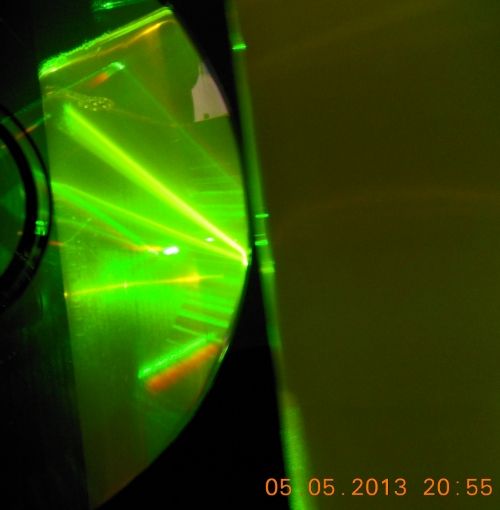Antharak
0
- Joined
- Apr 24, 2013
- Messages
- 549
- Points
- 43
Was not sure where to post this as I thought the more people that saw it the better for opinions as to what's going on.
Here is the setup:
Jug of tap water with pink highlighter ink.
Amethyst crystal, cut like a gem for a ring, suspended in the water.
A Qtech 532nm unknown wattage( says<5mw, but it lights matches).
Nikon Coolpix camera, in total auto mode.
Here is the pic.

Since I thought lasers were one wavelength, why is the light coming out of the crystal yellow? When the reflected beam is still green and where the yellow hits the side of the jug it's a green dot.. Is it that the 532nm is a mix of blue and yellow wavelengths?, I doubt this. Or is it that the crystal is absorbing the 532nm and readmitting it closer to 589nm. Or is it just the dye reacting to the emissions from the crystal?( my choice) Or am I just being an idiot? If so feel free to point and laugh.
Thoughts? Opinions?. Ideas? :thinking:
Ed
Here is the setup:
Jug of tap water with pink highlighter ink.
Amethyst crystal, cut like a gem for a ring, suspended in the water.
A Qtech 532nm unknown wattage( says<5mw, but it lights matches).
Nikon Coolpix camera, in total auto mode.
Here is the pic.

Since I thought lasers were one wavelength, why is the light coming out of the crystal yellow? When the reflected beam is still green and where the yellow hits the side of the jug it's a green dot.. Is it that the 532nm is a mix of blue and yellow wavelengths?, I doubt this. Or is it that the crystal is absorbing the 532nm and readmitting it closer to 589nm. Or is it just the dye reacting to the emissions from the crystal?( my choice) Or am I just being an idiot? If so feel free to point and laugh.
Thoughts? Opinions?. Ideas? :thinking:
Ed
Last edited:








